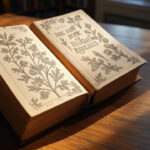Not just cleanliness, keeping the baby’s feeder germ-free is an important step for their health. The immune system of small children is very delicate. If even a little bacteria gets into the feeder, it can cause stomach pain, infection or other health issues.
In this guide, you will find a step-by-step method by which you can keep your baby’s bottle 100% hygienic at all times – without any stress.
Why is it important to keep the feeder germ-free?
Newly born babies or infants cannot fight bacteria like adults do. If the feeder is not cleaned properly, it can lead to:
- Diarrhea
- Vomiting
- Stomach infections
- Oral thrush (mouth infection)
If you keep the feeder germ-free, you give your baby a healthy start and also get peace of mind.
Step-by-Step Guide to Keep Baby Feeder Germ-Free
1. Wash Hands before Feeding
It is very important to wash hands with soap and water before touching the feeding bottle. People skip this step, but this is how germs get transferred.
2. Clean immediately after every use
Do not leave the milk in the bottle after feeding. Immediately rinse it with warm water. This prevents bacteria from settling.
3. Clean the bottle properly with a brush
Clean the inside of the feeder and the nipple properly with a soft bottle brush. Pay attention to these places:
- Threads of the bottle
- Small holes in the nipple
- Bottom area
Milk residue gets deposited here and germs grow.
4. Do not forget to sterilize daily
Even after cleaning, daily sterilization is very important. You can use any of the following methods:
- Boiling: Soak feeder and nipple in boiling water for 5–10 minutes.
- Electric Sterilizer: Kills 99.9% of bacteria quickly and safely.
- Microwave Sterilizer: Fast and travel-friendly option.
5. Use BPA-Free Bottles
Always use BPA-free and high-quality feeder bottles. They are safe and easy to clean.
6. Dry Completely Before Use
Let the feeder air dry on a clean drying rack before use. Pat dry with a cloth or towel—it can be harbouring germs.
7. Store in sterile container
After drying, store the bottles in a sealed and clean container or zip-lock bag. Do not leave them on an open counter.
8. Check nipples regularly
If the nipple is cut or cracked, change it immediately. Otherwise nipples can become a home for bacteria. It is best to replace it every 1–2 months.
9. Do not mix old milk with new milk
Always make fresh feed and if the baby has not drunk for an hour, discard it.
👶 Bonus Tips for Busy Parents:
✅ Buy 3–4 extra feeders – it will help in emergency
✅ Use travel sterilizer pouches while going out
✅ Set a reminder for daily sterilizing in your phone
❌ Common Mistakes that should be avoided
- Rinsing with only water
- Reuse of dirty nipples
- Drying the feeder with a towel
- Leave the bottles on the open counter
When your baby will feed from a germ-free feeder, he will be more healthy and happy. And you will also remain tension-free. Just follow these simple habits daily – wash, sterilize, dry & store – and give your baby a safe, healthy feeding experience.



